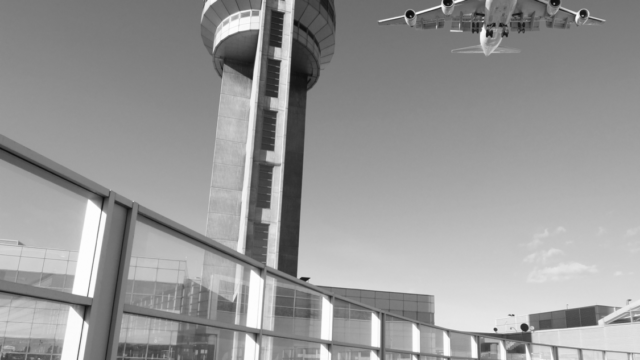
Introduction
Around the globe airlines are in the process ramp-up operations. Given the uncertainty that continues to persist globally, this will be a jump-and-run exercise that requires considering several factors. Depending on how and when demand returns, airlines’ network management function defines which part of the network to re-activate when in a step-by-step manner. The initial goal is to resume the most profitable routes first – although there is no guarantee that these routes will be the same ones as before the crisis.Ultimately, the ramp-up plan of network management will define how many aircraft, crew, and ground handling resources, as well as back office skills, are needed. At the same time, the actual operational costs of each route will significantly impact their decision. In the upcoming months, this decision will be quite precarious for airlines as there are multiple ramp-up options in each of the aforementioned operational areas. Each option comes with different critical path scenarios – mapping out the key tasks to ramp-up the different resource types, highlighting critical dependencies and ultimately deriving the costs of delivery for each option.Whichever commercial decision is eventually chosen to restart operations, each of the operational areas needs to run continuous and comprehensive assessments of the ramp-up costs, as well as of the operational feasibility. Given all critical paths, possible constraints, and bottlenecks, this will likely prove to be a colossal challenge for airlines to solve on top of that.
Actual unit costs per route will be different – but why?

Levers, Costs & Constraints to be Assessed
The multitude of ramp-up options can be differentiated mainly by their total cost and resource need, as well as the ramp-up time required to achieve the respective target state. Unfortunately, there is no universal “cure all” to apply to all airlines; optimal ramp-up scenarios are airline specific and total ramp-up costs can be influenced through various levers.
Increased health and safety standards, as well as new operational procedures result in higher resource demand, and thus higher total costs. Conversely, airlines can change their business model or implement other disruptive measures to lower operational costs; reviewing service levels and lowering product standards and specifications for a defined period of time can help further reduce these costs. This will require an assessment of the different cost types in all operational areas in order to understand the cost structure (e.g. variable vs. fixed or partially-fixed costs).To optimize these ramp-up costs, there will also be options to expedite or delay the ramp-up process depending on the expected recovery of the market.

Assessment of Critical Paths
Similar to processes and staffing, it is likely that during prosperous periods inefficiencies have also crept into other areas of the business. One example is airports’ IT. At many airports there are potential duplications, redundancies or excess work-around interfaces to be identified in the systems landscape. Furthermore, alternative sourcing solutions for systems and IT operations are to be reflected upon. Since not every system can immediately be shut down, replaced or merged, analyzing the current situation and realizing potential savings is going to inherently require some lead time. Some of the activities may be self-explanatory – others help airlines to differentiate from another and return to the market in the strongest position possible. To illustrate just a few flagship differentiators:

- Review shift concept in e.g. MRO to reduce expensive shifts and de-peak workload
- Assess external MRO capacity to gain higher ramp-up capacity during peak times
- Create COVID-19 standby concepts or resilience plans for flight and cabin crew
- Engage with unions for temporary suspension of CBA to gain more flexibility
- Check for new cross utilization options in ground ops and set up external partnerships to achieve synergies
- Define lean service standards to achieve short-term cost savings
- Digitalize sickness and quarantine procedures as far as possible to reduce manual work
- Set-up dedicated ramp-up project team to oversee ramp-up
The Feedback-loop to Network and Commercial – Knowing Actual Costs is Key for Agility
To account for discrepancies between predicted and actual operational costs coming along with the different scenarios, and thus correctly evaluate the ultimate feasibility of ramp-up concepts, it is necessary to implement a continuous and sufficiently detailed feedback loop with commercial functions such as network management to report on. Former work splits between commercial and operational functions have considerably shifted due to the pandemic, especially regarding resource planning, and will result in intensified collaboration to identify the profitable routes in times of a “new normal”. Now more than ever are smallest changes to the desired flight program helping to attain more cost-effective plans. Airlines are in urgent need to have full transparency of their actual cost per leg and rotation in each of the ramp up scenarios instead of just using average block hour costs to make decisions.
Conclusion
Given the amount of global market uncertainty, it is more important than ever for airlines to plan multiple scenarios, spanning all possibilities and attached costs. To identify and maintain the optimal, cost-effective ramp-up strategy, an assessment of each path to avoid falling victim to any of the named pitfalls is necessary. Apart of understanding actual route costs through holistic and realistic assessments across all cost drivers – only those who are able to continuously manage these down will be successful. Given the complexity that comes along with this task, this will have to be centrally and closely monitored by Head of Ops to ensure that any deviations are addressed to commercial immediately to guarantee the necessary agility. Operations will need to assign analytical capacity and competence in mapping out the key tasks to ramp-up the different resource types. Airlines will gain by closely monitoring the critical dependencies among resource streams and may closely reflect on the actual costs of delivery for each option. Although there will be unexpected developments, approaching the ramp-up by putting focus on precision in cost management is the best strategy in sustaining the still unknown ‘new normal’.



